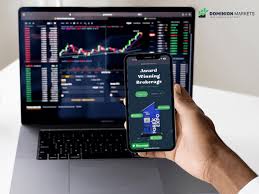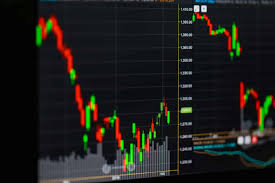
Forex trading systems play a crucial role in the modern trading landscape. These systems are designed to help traders make informed decisions while navigating the complexities of the forex market. Whether you are a beginner or an experienced trader, understanding the different trading systems available can enhance your trading performance. For more insights, you can visit forex trading systems fxtrading-broker.com.
What is a Forex Trading System?
A forex trading system is a set of rules or guidelines that traders follow to make buying and selling decisions. These systems can vary widely, from simple strategies that rely on basic technical analysis to more complex algorithms and automated systems. The essence of a trading system lies in its ability to provide traders with a structured approach to enter and exit trades, thereby reducing emotional decision-making and increasing the discipline required for successful trading.
Types of Forex Trading Systems
There are several types of forex trading systems, each with its own methodologies and approaches. Here are some of the most common types:
1. Technical Analysis-Based Systems
Technical analysis is one of the most popular approaches to forex trading. Traders using this system analyze price charts and employ various indicators, such as moving averages, Relative Strength Index (RSI), and Fibonacci retracement levels, to identify potential trade opportunities. These systems often focus on historical price patterns and trends to forecast future market movements.
2. Fundamental Analysis-Based Systems
Fundamental analysis involves evaluating economic indicators, news events, and geopolitical developments to predict currency movements. Traders who use this system pay close attention to interest rates, inflation, employment data, and political events. A fundamental analysis-based system can be complemented with technical analysis to provide a more comprehensive trading strategy.
3. Automated Trading Systems
Automated trading systems, also known as algorithmic trading systems, use computer algorithms to execute trades based on pre-defined criteria. These systems can analyze vast amounts of market data and take action in real-time, executing trades at speeds that are impossible for human traders. While automated systems can remove emotional biases, they require careful programming and backtesting to be effective.
4. Day Trading Systems
Day trading systems are focused on short-term trading. Traders using these systems typically open and close trades within a single trading day, capitalizing on small price fluctuations. Successful day trading requires quick decision-making and a thorough understanding of market dynamics. Many day traders use a combination of technical analysis and real-time news to make their trading decisions.
5. Swing Trading Systems
Swing trading systems are designed for traders who aim to capture price movements over several days or weeks. These systems typically involve less frequent trading than day trading and often rely on a combination of technical and fundamental analysis. Swing traders look for “swings” in the market and enter trades when they believe the price is about to change direction.
Creating Your Own Forex Trading System
While many traders choose to follow established trading systems, creating a personalized forex trading system can be beneficial. Here are some steps to create your own system:
- Define Your Goals: Determine what you want to achieve with your trading, such as specific profit targets or risk tolerance.
- Choose Your Market: Decide which currency pairs you want to trade and focus on understanding their characteristics.
- Select Your Strategies: Combine various approaches, such as technical indicators and fundamental news, to develop a comprehensive trading strategy.
- Backtest Your System: Use historical data to test your system’s effectiveness before implementing it in a live trading environment.
- Monitor and Adjust: Continuously track the performance of your trading system and make adjustments as necessary.

Risk Management in Forex Trading
No forex trading system is complete without a robust risk management strategy. Even the most effective trading systems can experience losses, so it is crucial to protect your capital. Here are some key risk management principles:
1. Set Your Risk Tolerance
Establish how much of your trading capital you are willing to risk on a single trade. Many traders adhere to the rule of risking no more than 1-2% of their capital per trade.
2. Use Stop-Loss Orders
Implementing stop-loss orders can safeguard your investments by automatically closing a trade when it reaches a specified loss level. This helps limit potential losses and protect your trading capital.
3. Diversify Your Portfolio
Adequate diversification can reduce risk exposure. Instead of concentrating all your capital on one currency pair, consider trading multiple pairs with varying characteristics.
4. Stay Informed
Continuously educate yourself about economic factors affecting the forex market, including interest rate changes, economic reports, and geopolitical events.
The Importance of Psychological Discipline
Trading psychology is an often-overlooked aspect of forex trading systems. Successful traders must cultivate psychological discipline to stick to their trading systems and avoid emotional decision-making. Here are some tips for maintaining discipline:
1. Keep a Trading Journal
Document your trades, including decision-making processes, outcomes, and emotional states. Reviewing your journal regularly can help identify patterns and improve your trading strategies.
2. Practice Patience
Not every market condition is suitable for trading. Wait for the right setups that align with your trading system before making any trades.
3. Avoid Overtrading
Overtrading can lead to burnout and greater losses. Stick to your trading plan, and only take trades that meet your defined criteria.
Choosing the Right Trading Platform
Selecting the appropriate trading platform is vital for the successful implementation of your forex trading system. Look for platforms that offer:
- Comprehensive charting tools and technical indicators
- User-friendly interface
- Robust customer support
- Low spreads and commission fees
Conclusion
In summary, forex trading systems provide valuable frameworks for traders to succeed in the fast-paced forex market. By understanding the different types of systems, developing personalized strategies, practicing effective risk management, and maintaining psychological discipline, traders can enhance their chances of achieving consistent profits. Remember, regardless of the system you choose, continuous education and adaptation to changing market conditions are essential for long-term success in forex trading.

